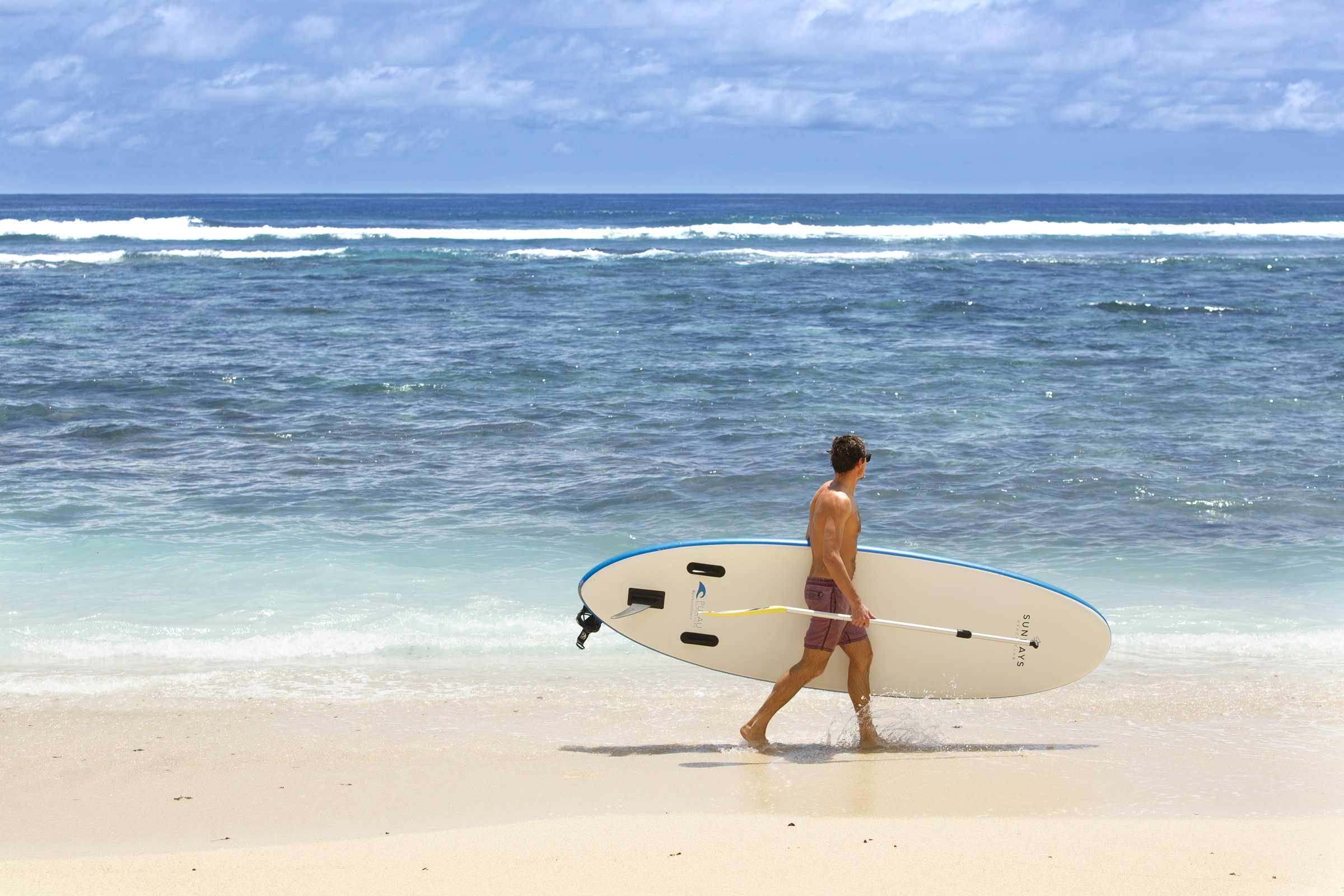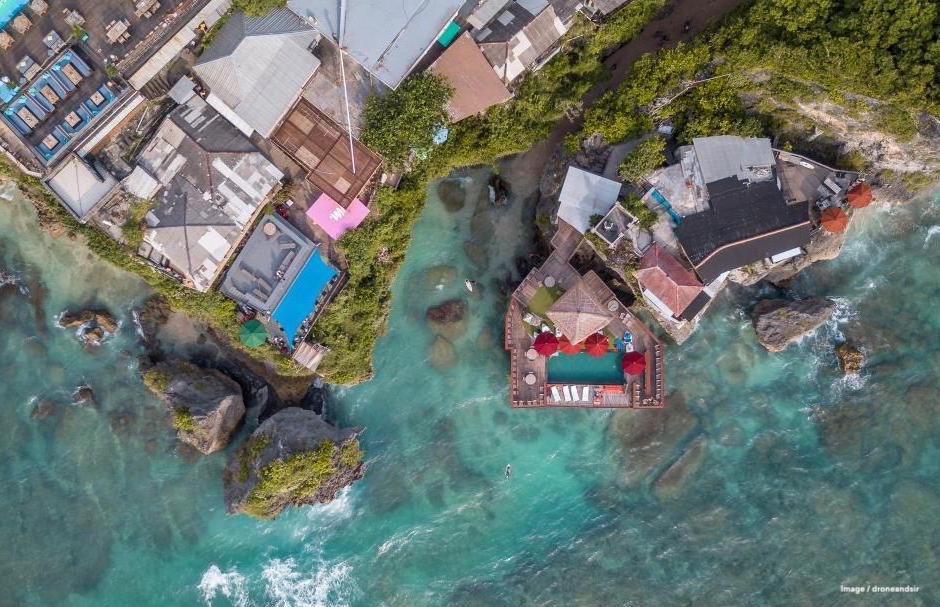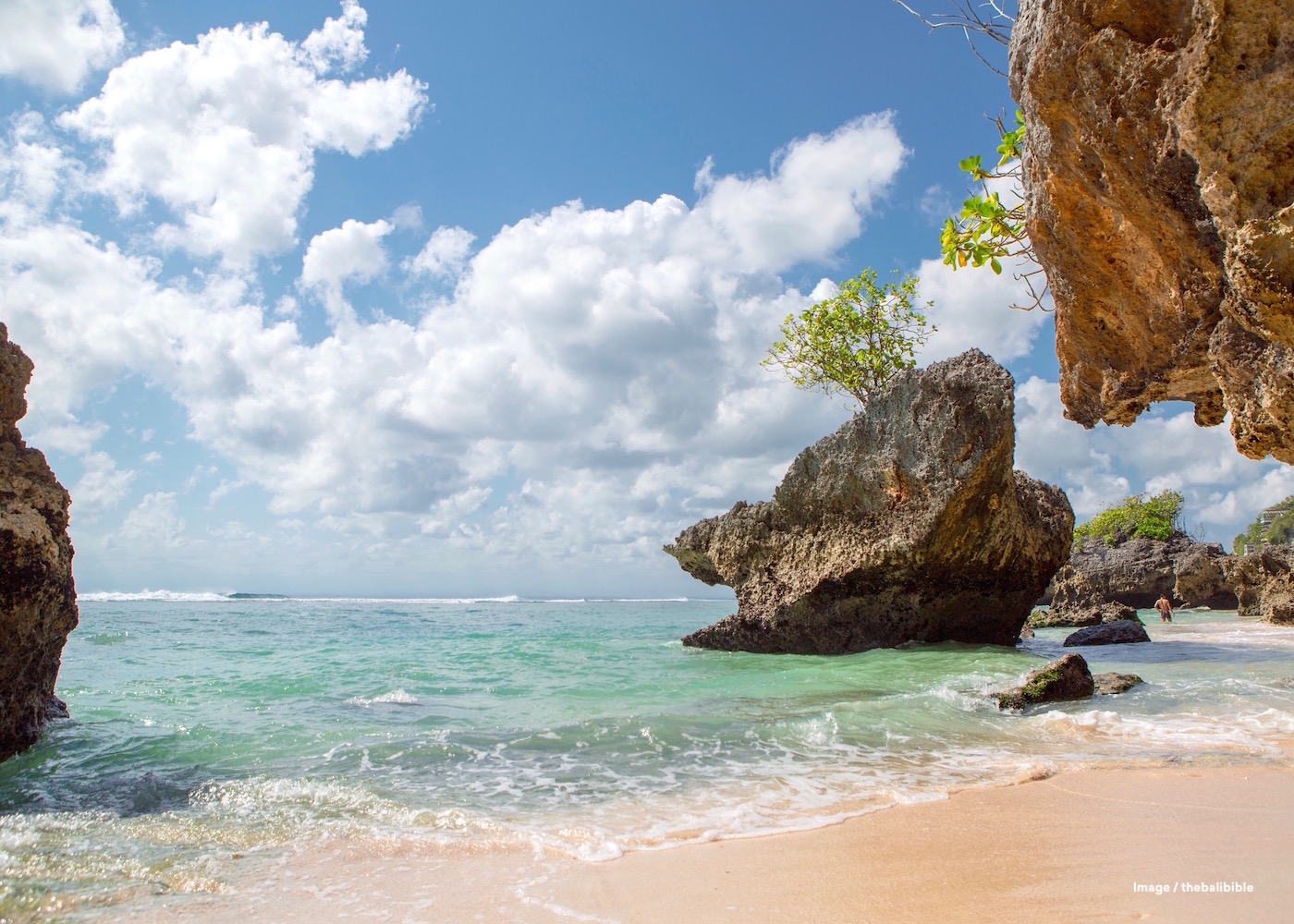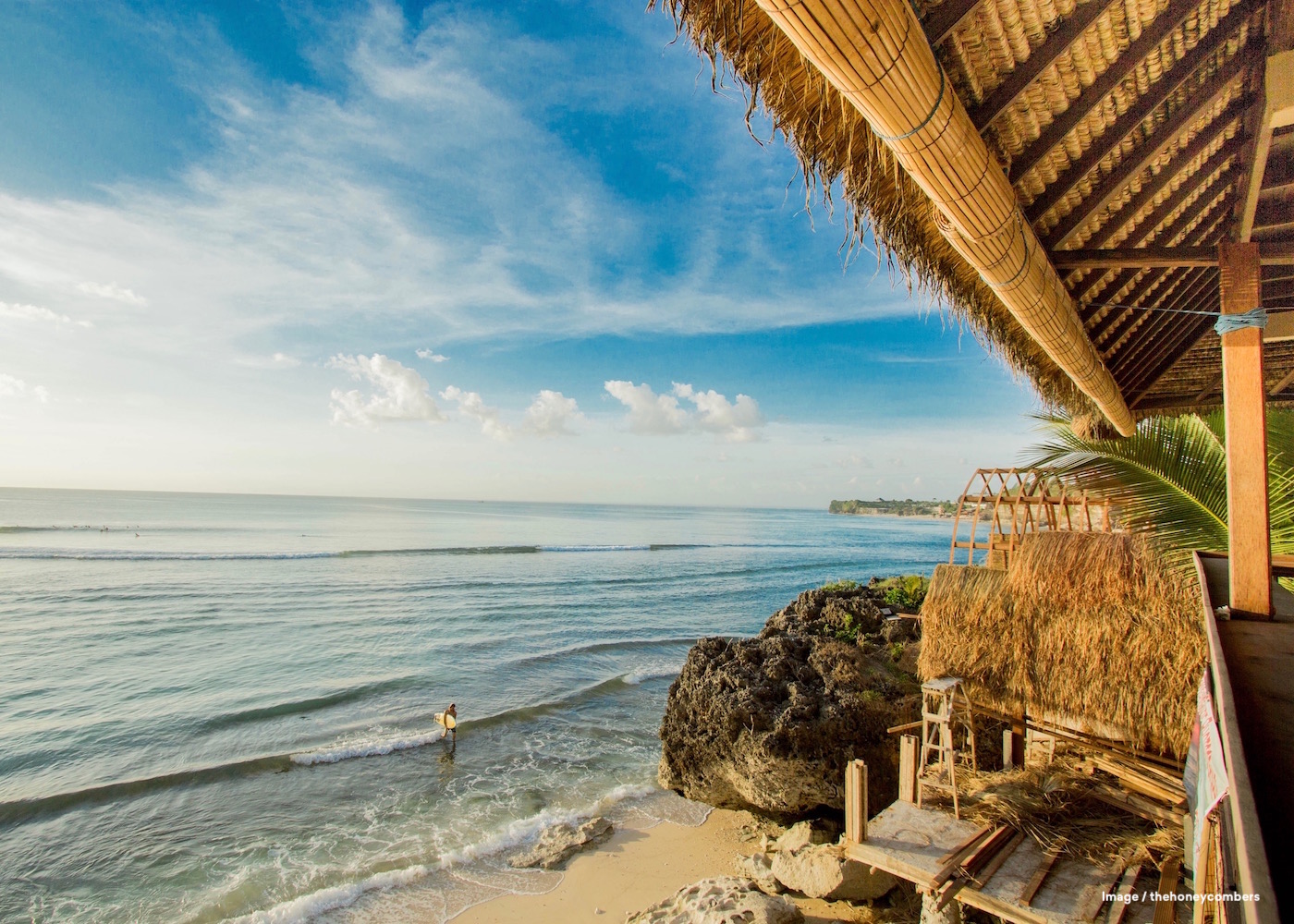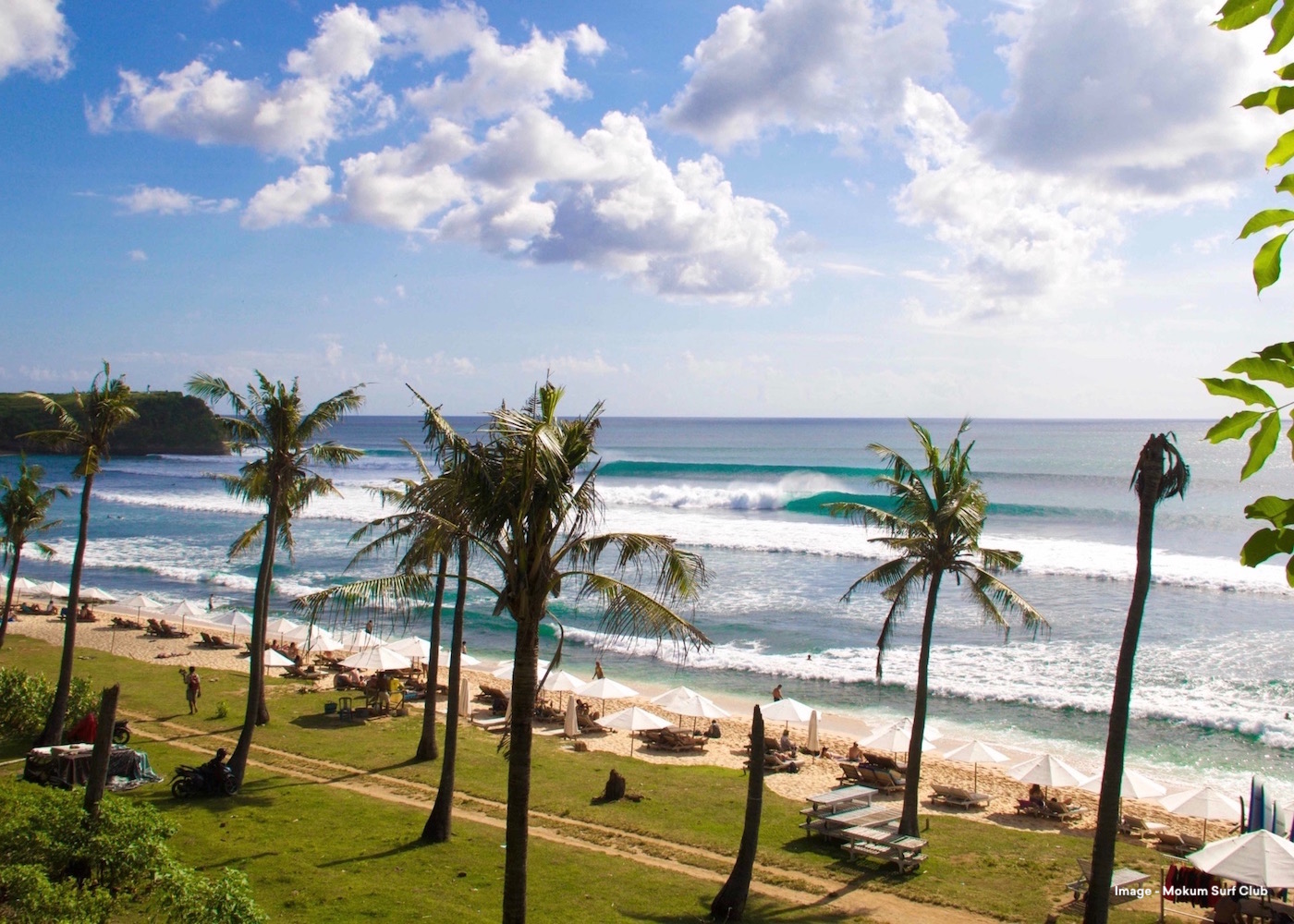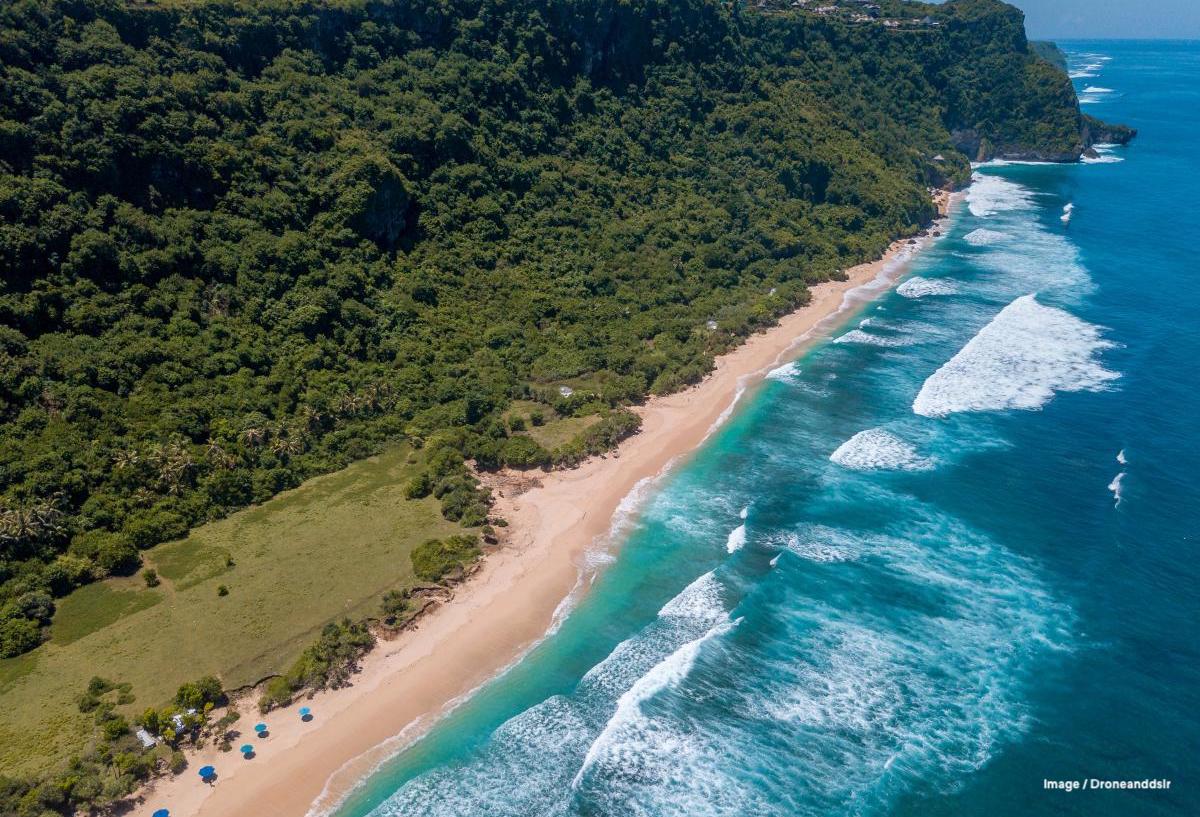Uluwatu Beach
Perhaps the most legendary of Bali’s surf spots, Uluwatu Beach sits underneath the beautiful 11th century Pura Luhur Temple.
The sandy stretch and its array of attributing bays essentially feature five amazing breaks in one — The Peak, Racetrack, Outside Corner, Temples and The Bombie. Depending on the time of day and swell, each of Uluwatu Beach’s peaks has its own unique features but requires an experienced surfer to fully enjoy their tidal power.
To gain access from the car park, and the selection of cafes and facilities lie above, traverse down some stairs into a wondrous cave setting where you can swim straight out into the breaks. If you require more sand to leave your belongings or sunbathe, take a left and discover a bay with ample space to spectate the surfers from a distance.
Uluwatu’s five main surf areas all break left down the reef, with various sections that change with the size of the swell. Temples is the least crowded section due to its distance from the shoreline, while The Bombie is responsible for some of the biggest waves ever ridden in Indonesia and is a must-see spectacle for any surfing enthusiast.
The Peak is located directly in front of the cave and is, therefore, the most popular, so be prepared to be patient and allow for surfing etiquette. Outside Corner is perhaps the most iconic peak, but is really reserved for experienced surfers, while Racetrack is a fast and long ‘rippable’ section with makable barrels draining off the reef. Best at low tide, it is found to the right of the cave and angles towards Padang Padang Beach.
